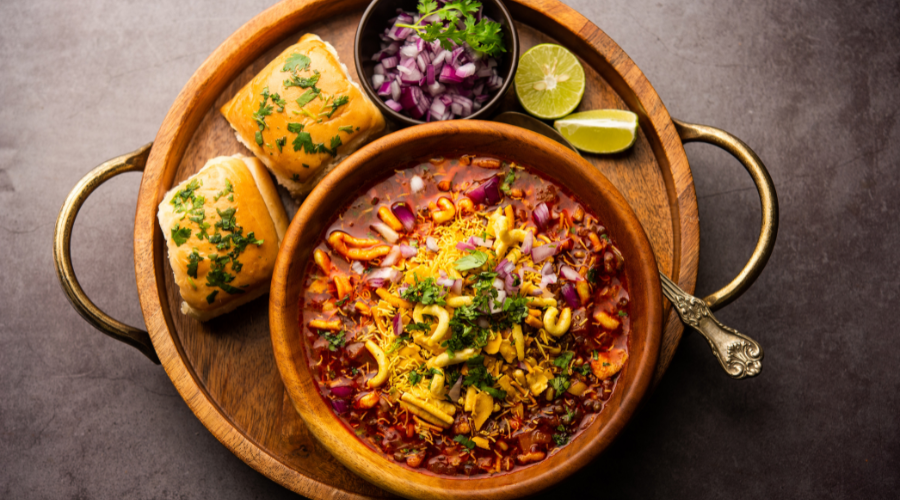Maharastrians should take complete pride in the fact that they introduced the concept of pav to the Indian culinary diaspora. These square-shaped buns, which are baked like bread, are never eaten alone. Adding flavour to their existence, they are often paired with something savoury to elevate the overall experience. Pavs are either paired with aloo bonda and are called vada pav or accompanied by a spicy curry called misal, which is called misal pav. While vada pav is still a dry snack, misal pav entices eaters with a distinctive texture and taste that takes the street food game to another level.
A breakfast staple in many Maharastrian households, misal pav is a hearty amalgamation of hot, spicy, and tangy flavours. The curry or misal is made with moth beans and sprouts cooked in tomatoes and onions. This flavourfully rich and smooth curry is topped with some sev for the perfect crunchiness, which is paired with soft buns or pav, making it a wholesome Maharashtrian meal.
Misal means a mixture, and true to its name, misal is a flavourful mixture of Indian spices, the slurpy and crunchy texture of the gravy, and the toppings. Originating in the Kolhapur district of Maharashtra in the early 20th century, misal pav became a wholesome breakfast for Kolhapur and Nashik mill workers. The workers needed a filling meal to keep up their energy levels until dinner when they returned from their jobs.
Misal became a popular snack/breakfast item not just for the workers but also for the street food lovers of Maharashtra. It is divided into two classic types: ussal, the thick, spicy sprouted mixture, and rassa, the watery gravy, which is either red, black, or green. These are called laal, kala, and hirwa rassa, each bursting with bold, mouth-watering flavours that are a treat to your taste buds. Misal pav is more than just breakfast; it’s a cultural ritual.
“In many Maharashtrian households, a Sunday morning without misal feels incomplete,” said Chef Varun Inamdar, celebratory and restaurateur, to Outlook Traveller Eats. Misal is not just limited to one specific region; there are multiple variations about its place of origin and spice levels. “Maharashtra’s culinary stretch is often described as Chaanda to Baanda (North to South, East to West of Maharashtra), and misal can be mapped across varying produce, climate, availability, spice composition,” added Inamdar.
Chef Inamdar shares how each region’s rassa has its own delicious story, from the peppery, kala masala-based Chaanda Misal of Chandrapur and earthy Nagpuri Misal with saoji spices, the tangy Ahmednagar, and mild, goda masala-layered Puneri, which is a spectrum of flavours. The fiery Nashik and smoke-laden Kolhapuri bring heat in varying intensities, while the Coastal/Konkan Misal offers a creamy, kokum-kissed twist.
Sharing his love for Maharastrian flavours and his enjoyable misal pav experience, he said, “I actively hunt for misal, whether it’s a hole-in-the-wall in Kolhapur, a humble stall outside a railway station in Nashik, or temples. Cooking it now feels like telling a story, each spoonful carrying layers of our culinary heritage with its heat, tang and soul.”
If you wish to relish this Maharashtrian delicacy at home, try Chef Varun Inamdar’s recipe.














